We are excited to introduce a new podcast that we hope will be a catalyst for depth, spiritual and psychological growth, and joy.
We are your hosts, Doug Scott and Fred Lynch
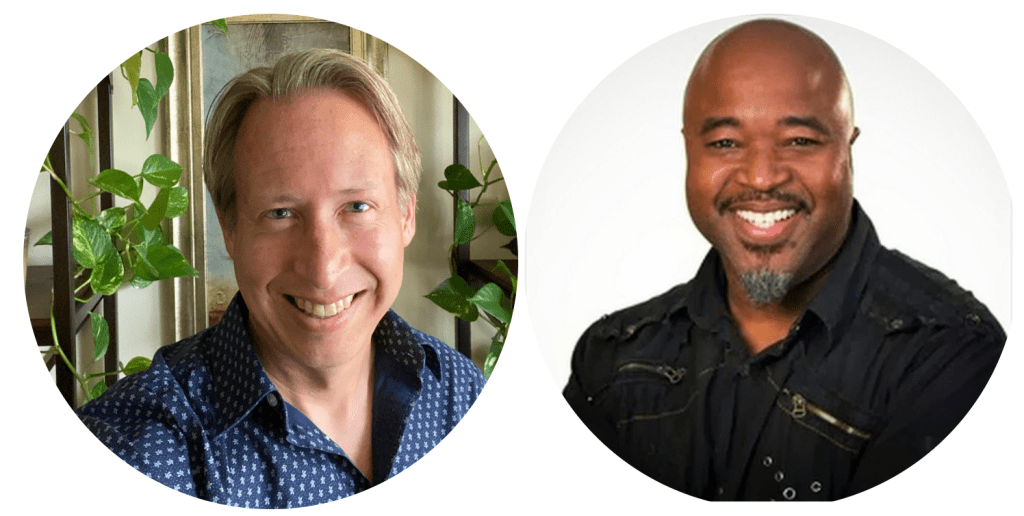
Ra says, “The Original Desire is that all entities seek and become one” (20.27). The “oneing” arises across ever increasing complexity. Complexification is evolution, and evolution is gained “by the losing,” as Ra mentions in 93.24.
It is sometimes said that there are three boxes that lead to evolution: Order, Disorder, and Reorder. Individually and collectively, we have to a sense of ‘order’ so that we develop identity. Then, we have to go through ‘disorder’ so that the experience the expansion and transformation of our ‘order’ gave us. We arrive at ‘reorder,’ but not after considerable deconstruction. In a world whose sense-making worldviews and institutions are thoroughly in disorder, how can we hold the depth of meaning so that we live into new spaces of inner and collective freedom? Our podcast hopes to be a small voice in the desert (disorder) which attempts to integrate, not segregate; unite diversity, not demand uniformity; include the pieces of disorder so that we may transcend into reconstructing–reconciling–reordering–renewing–the ever ancient, and ever new.
Building 4th is the name of our small spiritual community that is centered around the cosmic law known as the Law of One.
What does “Building 4th” mean? [see below for further descriptions of each of these four points]
- Building the Fourth Density [1]
- Building the Fourth Energy Center [2]
- Building the Fourth Way [3]
- Building Forth On Our Spiritual Evolution [4]
Building 4th’s Fourth Way is to embrace an incarnational spirituality grounded in the immediacy of our life-situations.
- We seek to learn in order to serve: We affirm that whenever we study the Law of One or other spiritual material, whether on our own or as a group, this is for the purpose of crystallizing our spiritual principles and learning how to embody them.
- The mundane is sacred: We affirm that there is no separation between the ordinary world and divinity. For example, doing dishes is an act of the Creator knowing Itself and can be supremely sacred.
- Love is our metric: We affirm that any teaching or belief, whether conventional or esoteric, is valued by how well it helps us love and understand ourselves and others, including those others whom we perceive to be different or even antagonistic.
- The way down is the way up: We affirm that our ordinary lives are rich in opportunities to grow spiritually. We try to bring our full presence and open heart to each moment, even–and especially–the difficult ones. We are learning that there is no escaping the conditions that foster our personal growth and therefore our goal is to embrace each challenge wherever we discern that it is safe and appropriate to do so. And even in dangerous, unsafe situations, we want to hold the assurance that the creator’s love is with us and we are immortal spiritual beings. In short, the ascension process is not a journey up and out of this difficult third-density illusion, but rather a movement down and into it more.
- The importance of humility: Ra suggests that to become the creator, “[…]renders one the most humble servant of all, transparent in personality and able to know and accept others.” We trust that our understanding is ever evolving, thus we try to hold our own views and various identities with humility. We acknowledge that admitting we don’t know fully requires some level of vulnerability and this can be uncomfortable.
We are inspired by the perennial philosophy that undergirds most of the world’s major spiritual traditions. For us, one primary description of the perennial philosophy is the Law of One material.
We are also informed by the academic disciplines of psychology, sociology, and theology, as we endeavor to weave a healthy synthesis between the conventional and the cosmic, the exoteric and the esoteric, and micro and the macro [4].
We hope that you enter the adventure with us and that you’ll enjoy our podcast.
[1]: Building Fourth Density
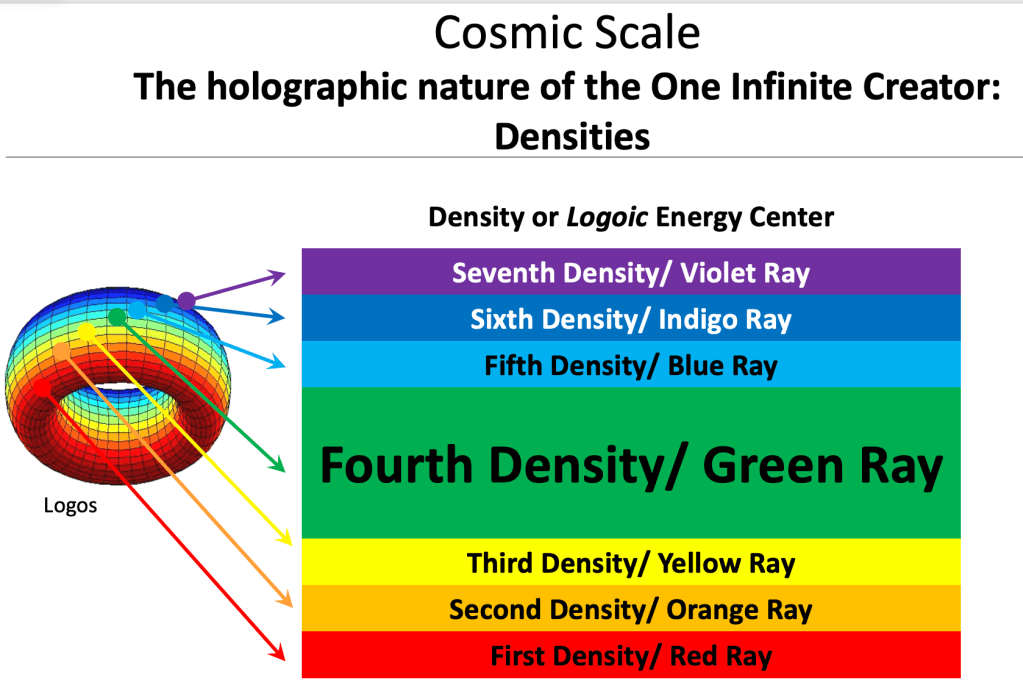
“A density is one of seven (or eight, depending on the perspective) dimensions, levels, or cycles of evolution in an octave of experience. It is called a “density” because each successive level is more densely packed with light. As with notes on a musical scale, seven densities are grouped together into an octave where the eighth density begins the first density of the next octave, this repeating infinitely. Each density represents a quantum vibrational spectrum or portion of intelligent energy, constituting a fundamentally different level of reality and awareness for the constituents of that density. Designed by the Logos, every density of experience offers its own set of lessons and parameters that must be learned and understood in order to cross the threshold and graduate from one density to the next. Each density completes its cycle according to the predetermined, clock-like rhythms of intelligent energy. […] The core vibrations of the seven densities have correspondence to the seven true colors and the seven energy centers.”
Ref: Bean, G, & Roy, D (2020). A Concept Guide, The Ra Contact Resource Series, Book 1. L/L Research. Retrieved online at https://assets.llresearch.org/books/ a_concept_guide.pdf), p 59.

[2]: Building Fourth Energy Center:

[3] Building the Fourth Way:
Following the general gist of Gurdjieff’s work where he taught a spiritual practice called, “The Work,” which was a “fourth way” to develop a human being that was well-balanced and thus able to efficiently use catalysts of everyday life to good effect.
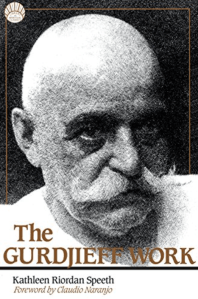
The Fourth Way is an integration of what Gurdjieff outlined as the three previous ways that have been tried by humans to achieve spiritual growth and maturity. The term is similar or identical to the endeavor of mystery schools which are not controlled by any one institution or set of doctrines. However, Gurdjieff did affirm the need to learn how to discern between different teachings because many, he claimed, lead to stagnation. Sometimes stagnation occurs because a teaching may emphasize the way of the Ascetic, or Monk, or Yogi to the detriment of the others, thereby leading people to an imbalance and possible stagnation. Other times, stagnation can occur when the teacher or teaching lacks substance and depth. Regardless, Gurdjieff and others remind us that if a spiritual teaching leads to spiritual maturity, it will be because of its emphasis on embodiment and loving service to others.
These are:
1) The Way of the Ascetic: works to obtain mastery of the attention (self-mastery) through struggles with [controlling] the physical body involving difficult physical exercises and postures. The focus is on controlling the body.




2) The Way of the Monk: works to obtain the same mastery of the attention (self-mastery) through struggle with [controlling] the affections, in the domain, as we say, of the heart, which has been emphasized in the west, and come to be known as the way of faith due to its practice particularly in Christianity. The focus is on controlling feelings.

—Abba Evagrius Ponticus
3) The Way of the Yogi: works to obtain the same mastery of the attention (as before: ‘self mastery’) through struggle with [controlling] mental habits and capabilities. The focus is on controlling the mind, or thoughts.
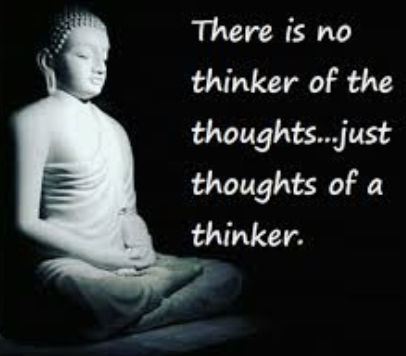

[4] Building Forth On Our Spiritual Evolution
Note: Our spiritual evolution is the Creator’s evolution. We are the Creator having an experience of evolution–and it is through evolution that the Creator gains gnosis of Itself (gnosis= lived experiential knowledge). “Christ” is a term that the means the “anointed.” The Universal Christ–or Cosmic Christ, as I call it in my blog– is nothing less than the One Infinite Creator experiencing Itself through manifestation.
And what is manifestation? Love!!
And how does manifestation evolve? Love!!
And what unites all the infinite diversity together in divine union? Love!!
The Universal Christ or Cosmic Christ is the ecstatic union of Spirit (intelligent Infinity) with Manifestation (intelligent energy)–this is Love as the Second Distortion, and this is Love behind the great, original desire that all entities seek and become one. Indeed, Love is anointed; supremely holy. It is “wholeness,” itself.
For these reasons expressed above, my blog is now called “Building 4th Cosmic Christ.” Why? Because we are the Cosmic Christ, the anointed, which builds forth–seeking union with all of creation’s entities–in ever greater complexity.
God, or the One Infinite Creator (Alpha) doesn’t experience gnosis without God-As-Creation (Omega). St. Paul states in his letter to Roman community, “We know that the whole creation has been groaning as in the pains of childbirth right up to the present time” (Romans 8:22). This ‘groaning’ is the ‘seeking to become one,’ as Ra states (20.27). We are a part of the whole creation groaning, we are some of the entities seeking union. We are Omega, or the Cosmic Christ, which is Love-Made-Manifest.
We build forth Cosmic Christ!
…..
Below are a few people or ideas that inspire us:
- Jesus of Nazareth
- The Law of One material
- Contemplative practices including Centering Prayer
- ET disclosure advocacy
- Social justice advocacy
- Developmental politics
- Near death experiences (NDE’s)
- Non-violent communication (NVC)
- Gurdjieff’s work, including:
- mindfulness,
- efficaciousness of physical labor,
- suffering as an access point to presence (and the present),
- need for effort and discipline,
- understanding the “many I’s,”
- integrating the three centers (intellectual, emotional, and physical),
- difference between essence and personality,
- the Cosmic Laws (Law of Three and Law of Seven), and
- Gurdjieff’s Enneagram,
- The Psychological Enneagram,
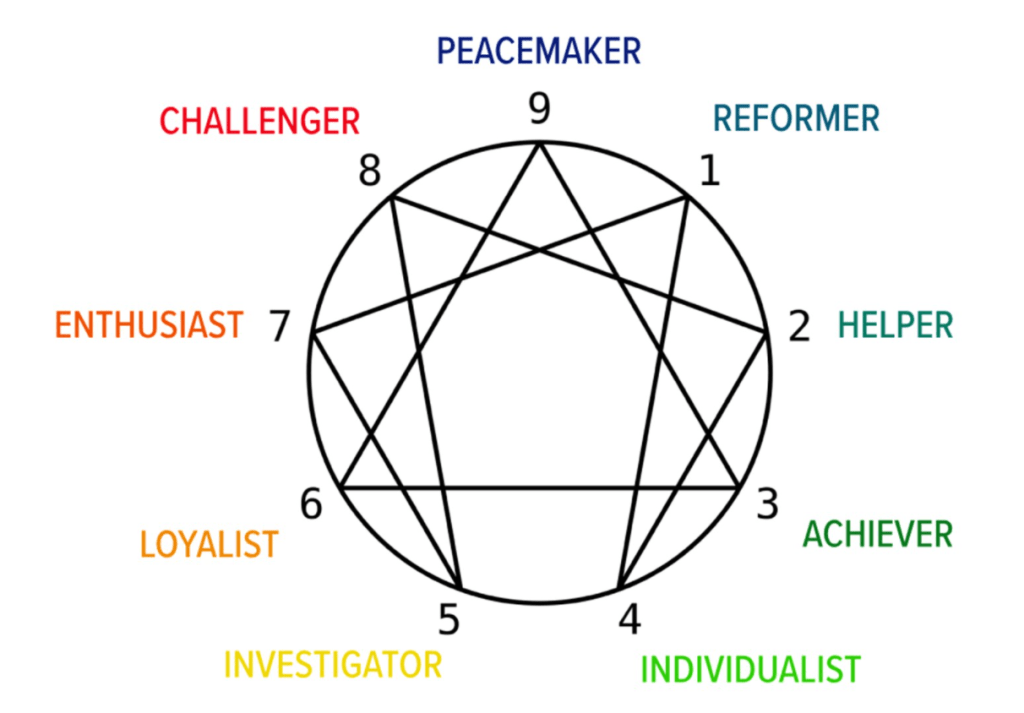
- The work of Ken Wilber in Integral Theory and Spiral Dynamics


